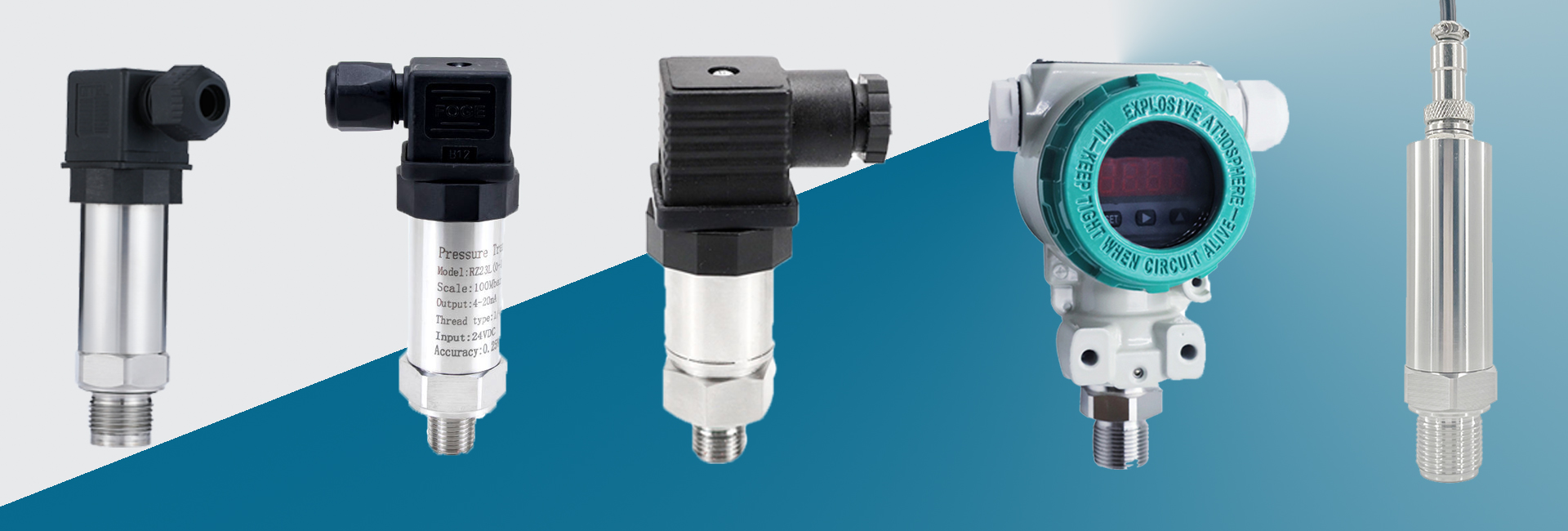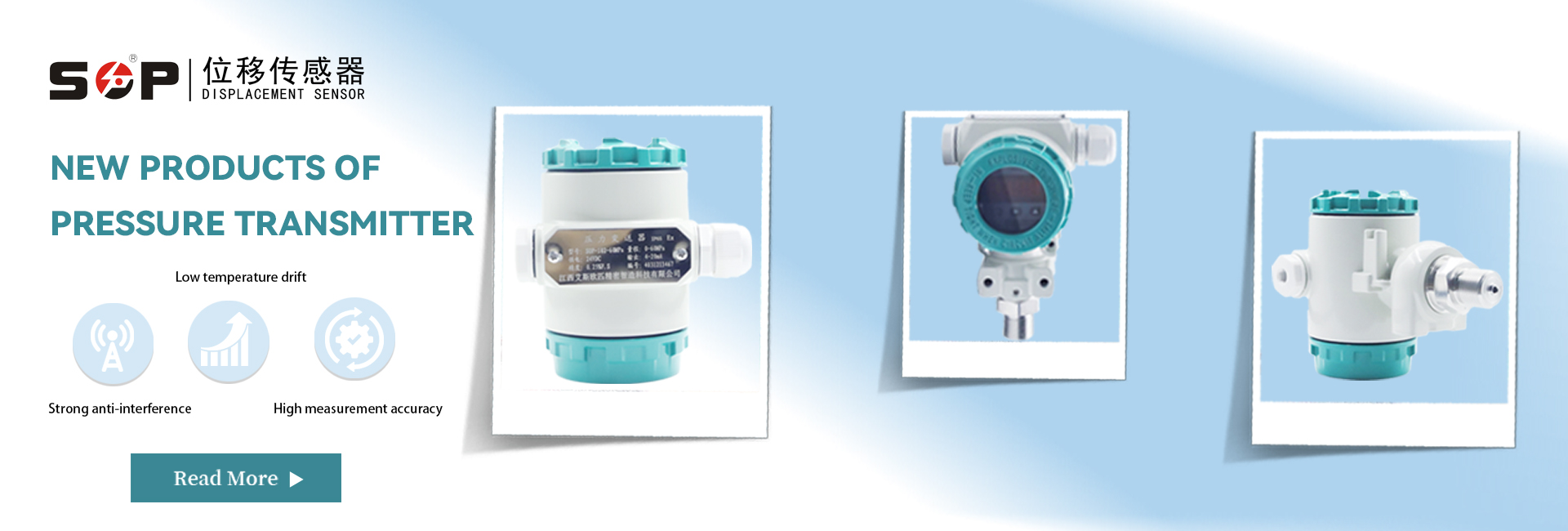What are the classifications of pressure sensors and how to select them?
What are the classifications of pressure sensors and how to select them?
一、 The classification of pressure sensors
Pressure sensor is the most widely used sensor, which is used in various industrial automatic control environments, involving water conservancy and hydropower, railway transportation, intelligent building, production automatic control, aerospace, military industry, petrochemical, oil wells, electric power, ships, machine tools, pipelines and many other industries.
Commonly used pressure sensors include strain gauge pressure sensor, ceramic pressure sensor, diffused silicon pressure sensor, sapphire pressure sensor and piezoelectric pressure sensor. Pressure sensors are mainly classified into pressure monitoring, pressure measurement, pressure control and measurement converted into other quantities according to their uses. According to the power supply mode, it can be divided into piezoresistive sensor and piezoelectric sensor. The former is passively powered and needs an external power supply. The latter is the charge generated by the sensor itself, which does not need an external power supply. According to the different accuracy of pressure measurement in different fields, it can be divided into low-precision and high-precision pressure sensors.
Traditional pressure sensors are mainly mechanical devices, which indicate the pressure by the deformation of elastic elements, but this structure is large in size and heavy in weight, and cannot provide electrical output.
With the development of semiconductor technology, semiconductor pressure sensors came into being. It is characterized by small volume, light weight, high accuracy and good temperature characteristics. Especially with the development of MEMS technology, semiconductor sensors are developing towards miniaturization with low power consumption and high reliability. Semiconductor Piezoelectric Resistance Type: The semiconductor piezoelectric impedance diffusion pressure sensor forms semiconductor deformation pressure on the surface of the sheet, and the sheet is deformed by external force (pressure) to produce piezoelectric impedance effect, so that the impedance change is converted into an electrical signal.
Electrostatic capacity type: electrostatic capacity type pressure sensor, which forms a capacitance by opposing the fixed electrode of glass and the movable electrode of silicon, and converts the change of electrostatic capacity caused by the deformation of the movable electrode by external force (pressure) into an electrical signal. (The operating principle of E8Y is electrostatic capacity mode, and other models adopt semiconductor mode).
二、 How to select the pressure sensor
1. Confirm the type of pressure sensor.
(1) Electromechanical type: the internal mechanical structure of the product is a pressure sensor which is composed of tension spring, lever, adjusting screw, metal cover and contact module device, and there is no processing circuit in it, and all of them are in the form of pressure switches with on-off output. Generally, it can be adjusted by screws or set the threshold of action; It is bulky, but it is cheaper and less accurate.
(2) Electronic: all pressure sensors have ceramic or metal measuring isolation diaphragm, which is in direct contact with the detected substance. The pressure acting on the diaphragm surface causes the diaphragm to be slightly deformed. The sensor can sense the magnitude of the deformation by measuring the tension spring resistance or capacitor principle through deformation, and output corresponding switching action or analog signal to the subsequent mechanical and circuit (bridge) equipment.
2. Confirm the device type Control loop or power loop.
3. Confirm the type of measuring pressure Pressure types mainly include gauge pressure, absolute pressure and differential pressure.
(1) Gauge pressure refers to the pressure that is less than or greater than atmospheric pressure based on atmospheric pressure;
(2) Absolute pressure refers to the pressure higher than the positive pressure zero based on the positive pressure zero;
(3) Differential pressure refers to the difference between two pressures.
4. Confirm the measurement scale Under normal circumstances, 80% of the measurement scale is selected according to the actual measurement pressure.
5. Confirm the power supply and output signal. Four kinds of output signals are available, including relay output, solid-state output and analog output (4 ~ 20mA or 0 ~ 10V). (For electronic pressure sensors) Among them, solid-state output is divided into single-segment switch and double-segment switch.
6. Confirm the maximum overload of the system The maximum overload of the system should be less than the overload maintenance limit of the pressure sensor, otherwise it will affect the service life of the product and even damage the product.
7. Confirm the pressure interface form Mainly includes: G1/4A(BSP), 1/4NPT, SAE7/16-20UNF, 4×G1/4(BSP), G3/8, etc.
8. Confirm the compatibility between measuring medium and contact material. In some measuring occasions, the measuring medium is corrosive. At this time, it is necessary to select materials compatible with the measuring medium or carry out special process treatment to ensure that the transmitter is not damaged.
9. Confirm the accuracy level The measurement error of the transmitter is classified according to the accuracy grade, and different accuracy corresponds to different basic error limits (indicated by the percentage of full-scale output); In practical application, it is selected according to the control requirements of measurement errors and the principle of applicable economy.
10. Confirm the working temperature scale The temperature of the measuring medium should be within the working temperature range of the transmitter. If it is used over-temperature, it will cause large measurement errors and affect the service life. In the production process of pressure transmitter, the temperature influence will be measured and compensated to ensure that the measurement error caused by the temperature influence of the product is within the scale required by the accuracy grade. In the case of high temperature, we can consider selecting high-temperature pressure sensors or adopting auxiliary cooling methods such as device condenser and radiator.
11.Confirm the site working environment and other conditions. Need to know whether there is vibration and electromagnetic interference, etc., and provide relevant information when selecting the type, so as to take corresponding treatment; When selecting the type, others, such as electrical connection mode, should also be considered according to the situation.



